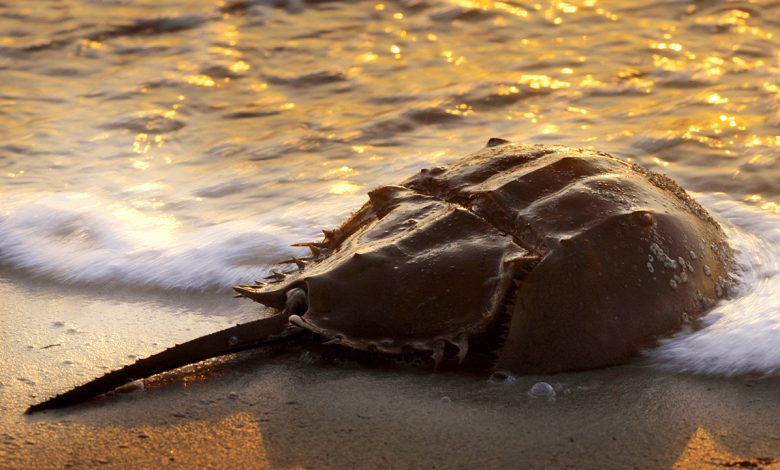
Context- Horseshoe crabs, one of the oldest living on earth and a medicinal treasure, appear to be disappearing from their usual spawning grounds along the Chandipur and Balaramgadi coast in the Balasore district of Odisha.
Key Highlights
- Before the living fossil becomes extinct as a result of destructive fishing practices, scientists have urged the government of Odisha to develop an effective protection mechanism right away.
- Additionally, they have requested that the Horseshoe crabs be added to the list of marine species for which a Species Recovery Plan must be developed by the Union Ministry of Environment, Forest, and Climate Change.
About Horseshoe crabs
- The horseshoe crab is one of the earliest marine fossils, dating back 445 million years to the time before dinosaurs existed.
- The creature has remained unchanged in morphology throughout its existence on Earth.
- Horseshoe crabs are a kind of arthropods that live in marine and brackish water.
- They are crustaceans and not true crabs.
- There are currently four species of crabs in existence. Two of the four species can be found along India’s northeast coast.
- Along Odisha’s Balasore coast, the only horseshoe crab species is T gigas.
- In addition to the well-known locations of Balasore and Balaramgadi in Odisha, scattered nesting grounds can be found along the coasts of Dhamra, Bhitarkanika, Hukitola, Barahajaria, Choudahajaria, and some villages.
- On September 9, 2009, the crab was added to Schedule IV of the Wild (Life) Protection Act of 1972, which makes it illegal to catch and kill a horseshoe crab.
Significance
- Millions of eggs that they lay on beaches to feed shorebirds, fish, and other wildlife are one of their ecological functions.
- In medical applications, the blue blood of horseshoe crabs is utilized for the detection of bacterial endotoxins.
- Horseshoe crabs are such an important animal, all COVID-19 vaccines were tested for contamination against Horseshoe crab blood.
- Horseshoe crabs are used to test all medicines and injectables.
- Horseshoe crab reagent has been used to create a molecule that could help treat preeclampsia and save the lives of many newborns.
Threats towards the species
- Poachers kill them for the popular belief that their meat is aphrodisiac.
- Horseshoe crabs are in danger from two to three major issues.
- Their spawning activities are impacted by unregulated fishing practices.
- For the purpose of breeding, they travel to the coasts of Balasore in Odisha and Digha and Sundarban in West Bengal. They pick a good place to lay their eggs. Unfortunately, the locals also break those eggs.
Way Ahead
- They must be protected from disturbance by the forest department.
- In order to safeguard the Horseshoe Crabs, it may be necessary to revisit the new breeding ground and declare the area a conservation reserve prior to the destructive fishing practice reaching it.





.png)



